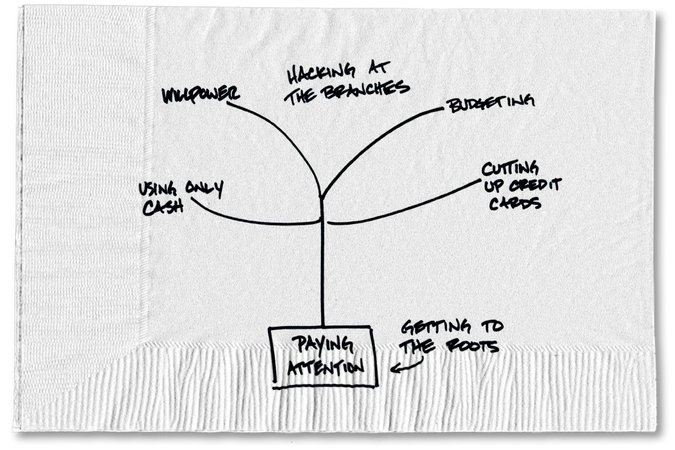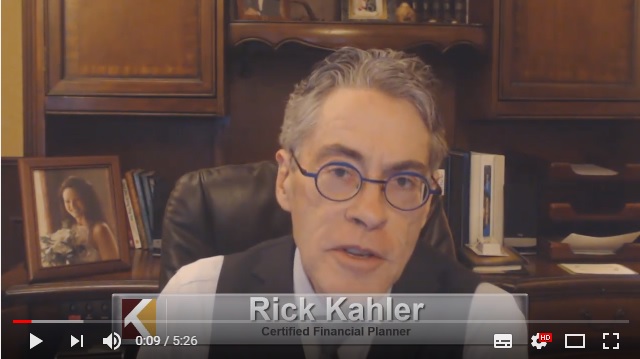The following blog is by Carl Richards originally published in The New York Times’ Blog.
In personal finance, almost all of the advice we come across seems to focus on playing defense. We’re always looking for ways to build bigger and better walls to protect ourselves from bad behavior: Cut up the credit cards. Pay only with cash. Stick to a budget. Hide the passwords.
It’s all good advice, but it’s defensive. And no matter how big the wall, our smarter, more clever self will find a way around, under or over it.
There is certainly value in defensive measures that help make good behavior automatic. But they seem to fall short when it comes to our spending. At least once, we’ve all tried sticking to a budget through sheer grit and willpower. Or we’ll wear a rubber band on our wrist and snap it when we do something wrong. Some people have gone so far as to zap themselves with an electric current to help control their bad habits.
I’ve tried all this stuff myself, and it seems to work fantastically — until it doesn’t. Just as with dieting, the day always comes when things stop working. Then I look for a different, bigger or stronger wall. But a recent experience makes me wonder if there might be a different way. It started with a trip to the sandwich chain Jimmy John’s.
I love the No. 9 Unwich (it’s a wrap with lettuce instead of bread). Over the last few years, I’ve probably ordered it for lunch more than 50 times. One day, I realized that despite buying a bunch of them, I didn’t know how much one cost. If someone were standing right outside the store and asked me how much I had just paid for my food, I couldn’t say. I thought it might be somewhere between $5 and $12.
On my next trip, I made a point to pay attention to how much I spent for my lunch. In Park City, Utah, a No. 9 Unwich costs $7.50. I didn’t do anything with this information that day. I just noticed it and found it interesting.
A few days later, as I drove toward Jimmy John’s, I thought about the fact that lunch was going to be $7.50. I then remembered that there were leftovers at home, only a few minutes away. Instead of picking up a No. 9, I went home for lunch.
Based on my experience, I’d submit to you that noticing what the No. 9 cost one day changed my behavior on another. As my friend Scott Kelley, who happens to be an awesome life coach, likes to say, “One day nothing changed, but everything was different.”
There is something to this process. After all, the defensive measures we have relied on are like hacking at the branches of an overgrown tree. The tree looks good for a bit, and then it doesn’t again. Sure, trimming a tree is important, but the roots are far more important for the tree’s long-term health. Similarly, all this outward focus on tips and tricks to control our spending might be important, but what is far more important is the inner work we can do by paying attention to what we do with our money.
In my Unwich story, I didn’t sit in the car after my meal and calculate that if I spent $7.50 every week on a No. 9, over 10 years that adds up to $3,900. Then, if I invested that sum for the next 30 years and earned 6 percent, it would grow to more than $22,000 in retirement. I didn’t decide I could buy an Unwich only if I paid with cash. And I didn’t shame and blame myself for spending $7.50 on a sandwich without bread.
I just noticed what I was doing with my money and, for me, things changed.
What if spending without noticing what we’re doing is at the root of our problem with overspending? If that’s true, then the simple act of noticing what we’re doing is at the root of the solution.
Why not test my theory this week? Instead of building ever-bigger defensive walls, just pay attention. Over the next few days, notice how and when you spend money. As you pay the bill for something, how do you feel? Do you discover gaps between your values and your spending?
I don’t know if the switch will flip for you in a day or even in a week. But solving our problems with money won’t happen if we only hack at the branches and rely on walls to keep us from misbehaving. To be clear, noticing isn’t judging. Noticing is about gathering information to help us better align our choices and our values. Only then can we come out from behind our walls and stop worrying that we’re going to ruin our financial futures with one bad decision.
About the author: For the last 15 years, Carl Richards has been writing and drawing about the relationship between emotion and money to help make investing easier for the average investor. His first book, “Behavior Gap: Simple Ways to Stop Doing Dumb Things With Money,” was published by Penguin/Portfolio in January 2012. Carl is the director of investor education at BAM Advisor Services. His sketches can be found at behaviorgap.com, and he also contributes to the New York Times Bucks Blog and Morningstar Advisor. You can now buy – “The Behavior Gap” by Carl Richard’s at AMAZON.







0 Comments